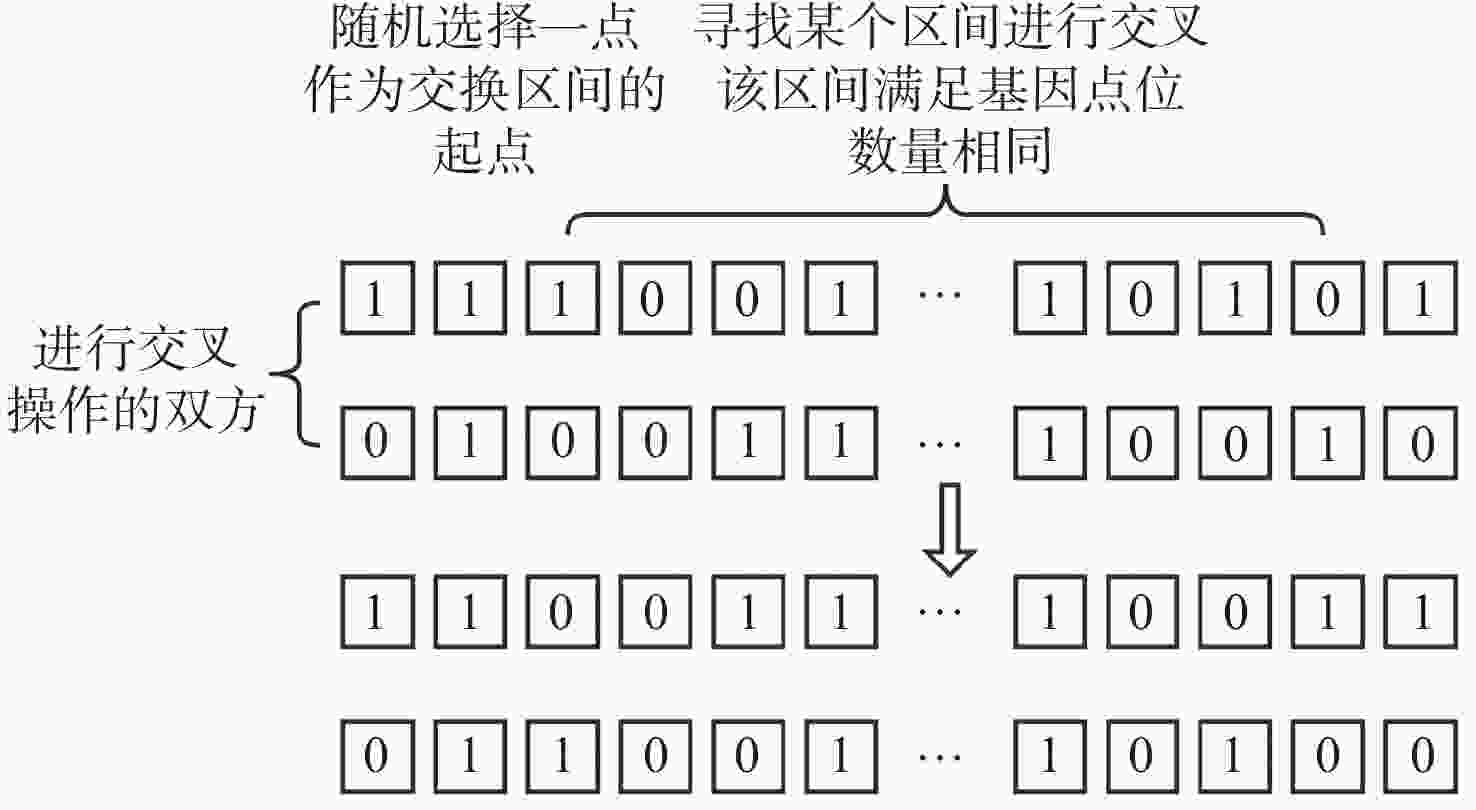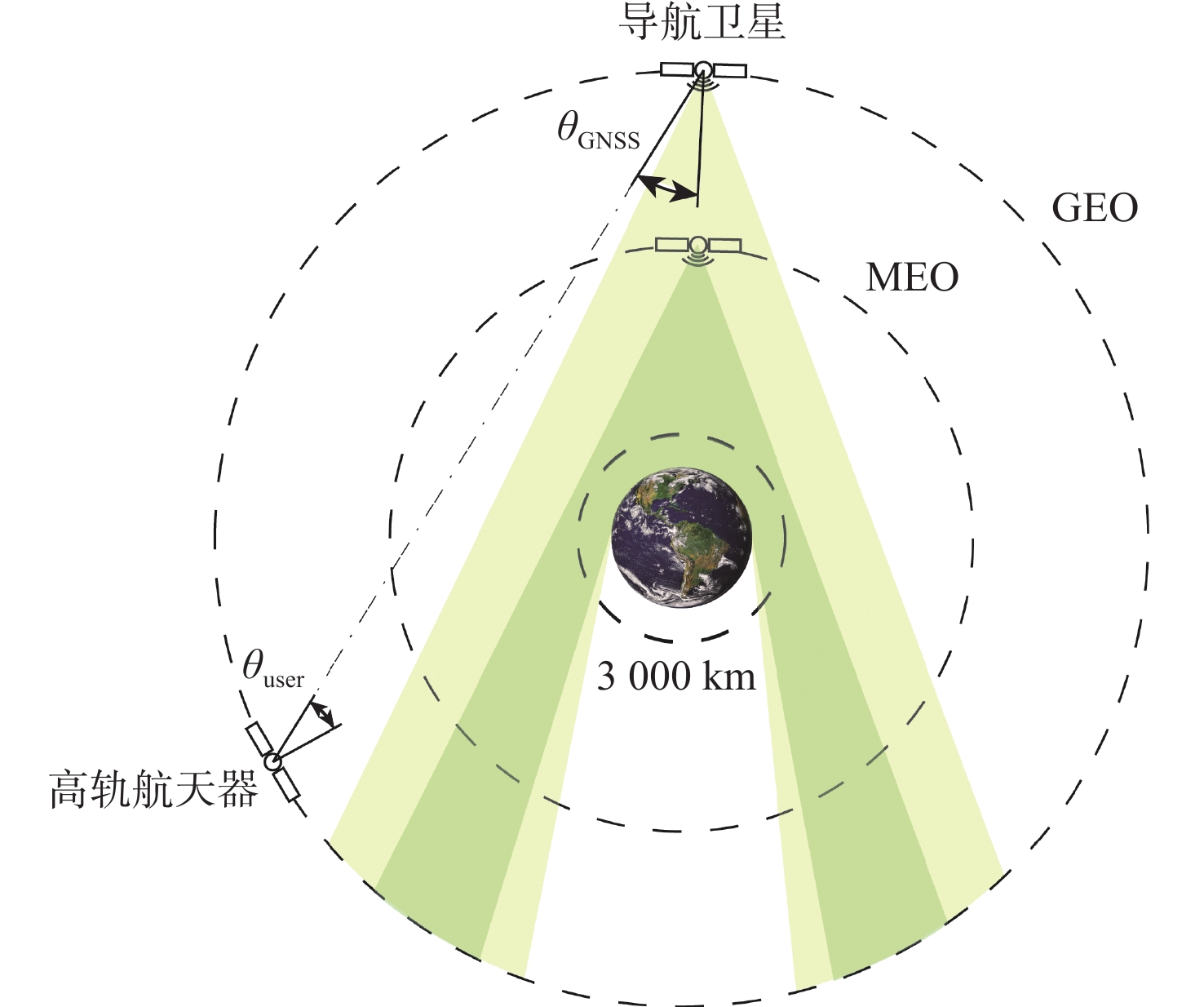Satellite selection based on parallel genetic algorithm for high orbit autonomous satellite navigation
-
摘要:
高轨航天器自主导航能力在北斗三号卫星导航系统建成后得到了增强,但是也带来了部分时刻可见星数量冗余的问题。为降低运算量以保证服务的实时性,提出一种利用多种群并行遗传算法 (PGA) 进行快速选择当前最优可见星组合的方法。该方法将加权精度因子 (WDOP) 作为适应度评判标准,利用粗粒度式并行划分成的多个子种群进行搜索加速,并通过变异因子差异化设置与子种群间的信息交流来提高搜索能力。对多个典型高轨环境下7颗及以上选星任务的仿真测试表明,基于PGA的选星方法解相比遍历法所求最优解绝对误差平均值小于0.1,相对误差最大不超过1%。仿真结果表明,在典型高轨环境F1接收机利用四系统组合导航时,所提方法可以有效地快速、准确完成指定卫星数的选星任务。
-
关键词:
- 北斗三号卫星导航系统 /
- 高轨 /
- 选星 /
- 并行遗传算法 /
- 加权精度因子
Abstract:After the BeiDou-3 navigation satellite system was finished, the performance of high-orbit autonomous navigation was improved, but it also occasionally resulted in the redundancy of visible satellites. In order to reduce the arithmetic operations to ensure the real-time performance, based on a multiple-population parallel genetic algorithm (PGA), a new method to quickly select the optimal combination of visible satellites was proposed. The algorithm chooses the weighted dilution of precision (WDOP) as the fitness function, uses sub-populations in coarse-grained to speed up the search, and improves the searchability through the differential setting of mutation factors and the information exchange between sub-populations. The simulation experiments result of 7 or more satellite selection tasks in several typical high orbit environments show that the average absolute error between the PGA-based selection algorithm solution and the optimal solution obtained by the ergodic method is less than 0.1, and the maximum relative error is less than 1%. The outcomes demonstrate that, when the receiver employs the four-system integrated navigation in a typical high-orbit environment, the algorithm can efficiently execute the task of choosing satellites for the specified number of satellites fast and precisely.
-
表 1 接收机工作轨道根数
Table 1. Elements of working orbits of receiver
轨道
类型半长轴/
km偏心率 轨道
倾角/(°)近地点
幅角/(°)平近点角/(°) 升交点
赤经/(°)42166.3 0 0 0 264 90 GEO 42166.3 0 0 0 324 90 42166.3 0 0 0 24 90 42166.3 0 60 0 0 335 IGSO 42166.3 0 120 0 0 34 42166.3 0 90 0 0 94 SSTO 43321.3 0.84 15 270 92 262 40482.9 0.84 16 60 84 309 40482.9 0.84 100 100 84 280 40482.9 0.84 100 270 84 280 表 2 并行遗传选星结果对比
Table 2. Results comparison of satellite selection based on PGA
种群数 平均误差 平均方差 平均耗时/ms M=150 M=200 M=250 M=150 M=200 M=250 M=150 M=200 M=250 1 0.1071 0.0962 670 0.0419 0.0436 879 0.0180 0.0185 1104 2 0.0748 0.0685 355 0.0435 0.0412 466 0.0246 0.0174 576 3 0.0811 0.0747 253 0.0317 0.0197 322 0.0222 0.0172 409 4 0.0890 0.0798 187 0.0410 0.0339 256 0.0162 0.0106 317 5 0.1227 0.1340 161 0.0498 0.0429 222 0.0323 0.0231 265 6 0.1467 0.1467 149 0.0787 0.0787 195 0.0385 0.0385 243 表 3 不同选星数下方法性能
Table 3. Performance under different number of satellites selected
选星数 平均误差 平均方差 平均耗时/ms 遍历法平均耗时/ms 7 0.025 5 0.019 8 212 12 837 8 0.026 3 0.021 9 237 34 251 9 0.016 6 0.014 6 280 79 591 10 0.016 2 0.010 6 317 162 492 11 0.010 8 0.002 9 360 293 288 表 4 选星方法效果对比
Table 4. Performance comparison of effects of satellite selection algorithms
轨道类型 平均定位误差/m baseline PGA PSO GEO 0° 8.44 7.51 7.88 GEO 125° 19.09 17.24 17.77 SSTO 26.36 21.41 22.10 -
[1] SHI T, ZHUANG X, XIE L. Performance evaluation of multi-GNSSs navigation in super synchronous transfer orbit and geostationary earth orbit[J]. Satellite Navigation, 2021, 2(1): 1-13. doi: 10.1186/s43020-020-00033-9 [2] ACHARYA R. Understanding satellite navigation[M]. New York: Academic Press, 2015. [3] YARLAGADDA R, ALI I, AL-DHAHIR N, et al. GPS GDOP metric[J]. IEE Proceedings-Radar, Sonar and Navigation, 2000, 147(5): 259-264. doi: 10.1049/ip-rsn:20000554 [4] 丛丽, ABIDAT A I , 谈展中. 卫星导航几何因子的分析和仿真[J]. 电子学报, 2006, 34(12): 2204-2208. doi: 10.3321/j.issn:0372-2112.2006.12.017CONG L, ABIDAT A I, TAN Z Z. Analysis and simulation of the GDOP of satellite navigation[J]. Acta Electronica Sinica, 2006, 34(12): 2204-2208(in Chinese). doi: 10.3321/j.issn:0372-2112.2006.12.017 [5] KIHARA M, OKADA T. A satellite selection method and accuracy for the global positioning system[J]. Navigation, 1984, 31(1): 8-20. doi: 10.1002/j.2161-4296.1984.tb00856.x [6] 金玲, 黄智刚, 李锐, 等. 多卫导组合系统的快速选星算法研究[J]. 电子学报, 2009, 37(9): 1931-1936.JIN L, HUANG Z G, LI R, et al. Study on fast satellite selection algorithm for integrated navigation[J]. Acta Electronica Sinica, 2009, 37(9): 1931-1936(in Chinese). [7] MOSAVI M R, DIVBAND M. Calculation of geometric dilution of precision using adaptive filtering technique based on evolutionary algorithms[C]//Proceedings of the International Conference on Electrical and Control Engineering. Piscataway: IEEE Press, 2010: 4842-4845. [8] PHATAK M S. Recursive method for optimum GPS satellite selection[J]. IEEE Transactions on Aerospace and Electronic Systems, 2001, 37(2): 751-754. doi: 10.1109/7.937488 [9] 王尔申, 贾超颖, 曲萍萍, 等. 基于混沌粒子群优化的北斗/GPS 组合导航选星算法[J]. 北京航空航天大学学报, 2019, 45(2): 259-265.WANG E S, JIA C Y, QU P P, et al. BDS/GPS integrated navigation satellite selection algorithm based on chaos particle swarm optimization[J]. Journal of Beijing University of Aeronautics and Astronautics, 2019, 45(2): 259-265(in Chinese). [10] 宋丹, 许承东, 胡春生, 等. 基于遗传算法的多星座选星方法[J]. 宇航学报, 2015, 36(3): 300-308.SONG D, XU C D, HU C S, et al. Satellite selection with genetic algorithm under multi-constellation[J]. Journal of Astronautics, 2015, 36(3): 300-308(in Chinese). [11] WANG M, SHAN T, LI M, et al. GNSS-based orbit determination method and flight performance for geostationary satellites[J]. Journal of Geodesy, 2021, 95(8): 89. doi: 10.1007/s00190-021-01545-1 [12] 葛继科, 邱玉辉, 吴春明, 等. 遗传算法研究综述[J]. 计算机应用研究, 2008, 25(10): 2911-2916. doi: 10.3969/j.issn.1001-3695.2008.10.008GE J K, QIU Y H, WU C M, et al. Summary of genetic algorithms research[J]. Application Research of Computers, 2008, 25(10): 2911-2916(in Chinese). doi: 10.3969/j.issn.1001-3695.2008.10.008 [13] 岳嵚, 冯珊. 粗粒度并行遗传算法的计算性能分析[J]. 武汉理工大学学报, 2008, 30(7): 107-110.YUE Q, FENG S. Performance analysis of thr coarse-grained parallel[J]. Journal of Wuhan University of Technology, 2008, 30(7): 107-110(in Chinese). [14] 郭彤城, 慕春棣. 并行遗传算法的新进展[J]. 系统工程理论与实践, 2002, 22(2): 15-23. doi: 10.3321/j.issn:1000-6788.2002.02.003GUO T C, MU C D. The parallel drifts of genetic algorithms[J]. Systems Engineering-Theory & Practice, 2002, 22(2): 15-23(in Chinese). doi: 10.3321/j.issn:1000-6788.2002.02.003 [15] 丁孟为. 遗传算法在多核系统上的性能分析和优化[D]. 上海: 上海交通大学, 2012.DING M W. Performance analysis and optimization of genetic algorithms on multi-core systems[D]. Shanghai: Shanghai Jiao Tong University, 2012 (in Chinese). [16] SIVANANDAM S N, DEEPA S N. Introduction to genetic algorithms[M]. Berlin: Springer, 2008. [17] 程博文, 刘伟伟, 何熊文, 等. 猎户座飞船电子系统设计特点分析与启示[J]. 航天器工程, 2016, 25(4): 102-107.CHENG B W, LIU W W, HE X W, et al. Research on Orion electronic system[J]. Spacecraft Engineering, 2016, 25(4): 102-107(in Chinese). [18] 王梦丽, 孙广富, 王飞雪, 等. 混合星座导航系统的加权几何精度因子分析[J]. 中国空间科学技术, 2007, 27(5): 50-56.WANG M L, SUN G F, WANG F X, et al. Weighted geometric dilution of precisio’s analysis for mixed constellation navigation sytem[J]. Chinese Space Science and Technology, 2007, 27(5): 50-56(in Chinese). [19] WON D H, AHN J, LEE S W, et al. Weighted DOP with consideration on elevation-dependent range errors of GNSS satellites[J]. IEEE Transactions on Instrumentation and Measurement, 2012, 61(12): 3241-3250. doi: 10.1109/TIM.2012.2205512 [20] ZHENG L, LU Y, GUO M, et al. Architecture-based design and optimization of genetic algorithms on multi- and many-core systems[J]. Future Generation Computer Systems, 2014, 38: 75-91. doi: 10.1016/j.future.2013.09.029 [21] LIENIG J. A parallel genetic algorithm for performance-driven VLSI routing[J]. IEEE Transactions on Evolutionary Computation, 1997, 1(1): 29-39. doi: 10.1109/4235.585890 [22] LIU H, CAO J, CHENG X, et al. The data processing and analysis for the CE-5T1 GNSS experiment[J]. Advances in Space Research, 2017, 59(3): 895-906. doi: 10.1016/j.asr.2016.06.035 [23] THOELERT S, ANTREICH F, ENNEKING C, et al. BeiDou 3 signal quality analysis and its impact on users[J]. Navigation: Journal of the Institute of Navigation, 2019, 66(4): 695-704. doi: 10.1002/navi.331 [24] LIU H, CHENG X, TANG G, et al. GNSS performance research for MEO, GEO, and HEO[C]//Proceedings of the China Satellite Navigation Conference. Berlin: Springer, 2017: 37-45. -







 下载:
下载:








